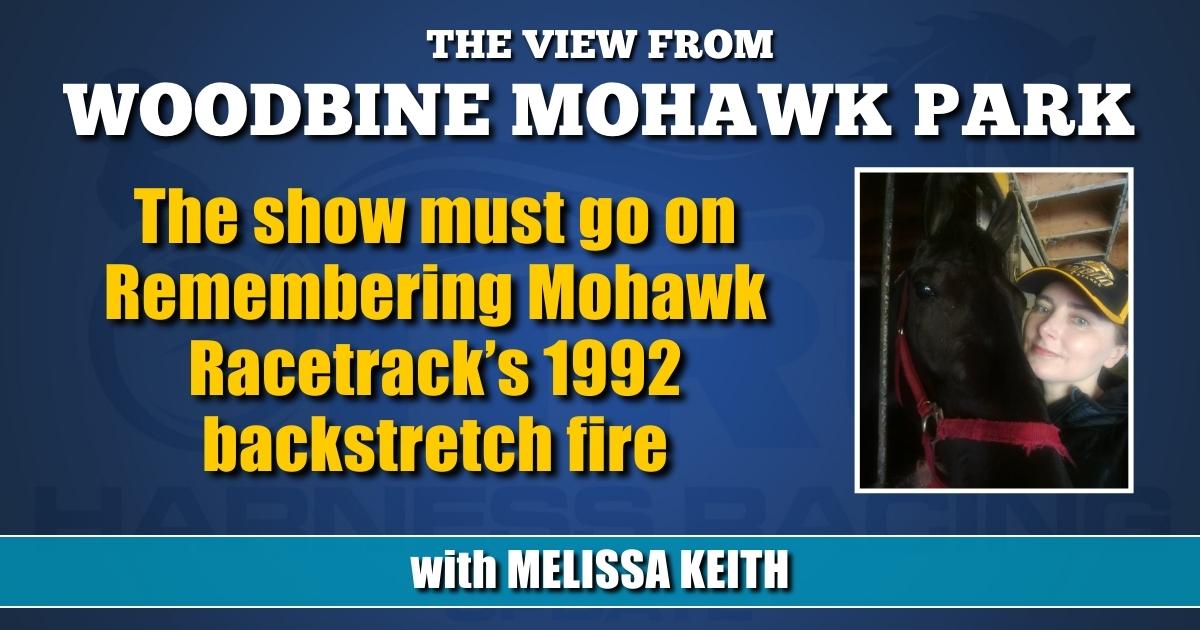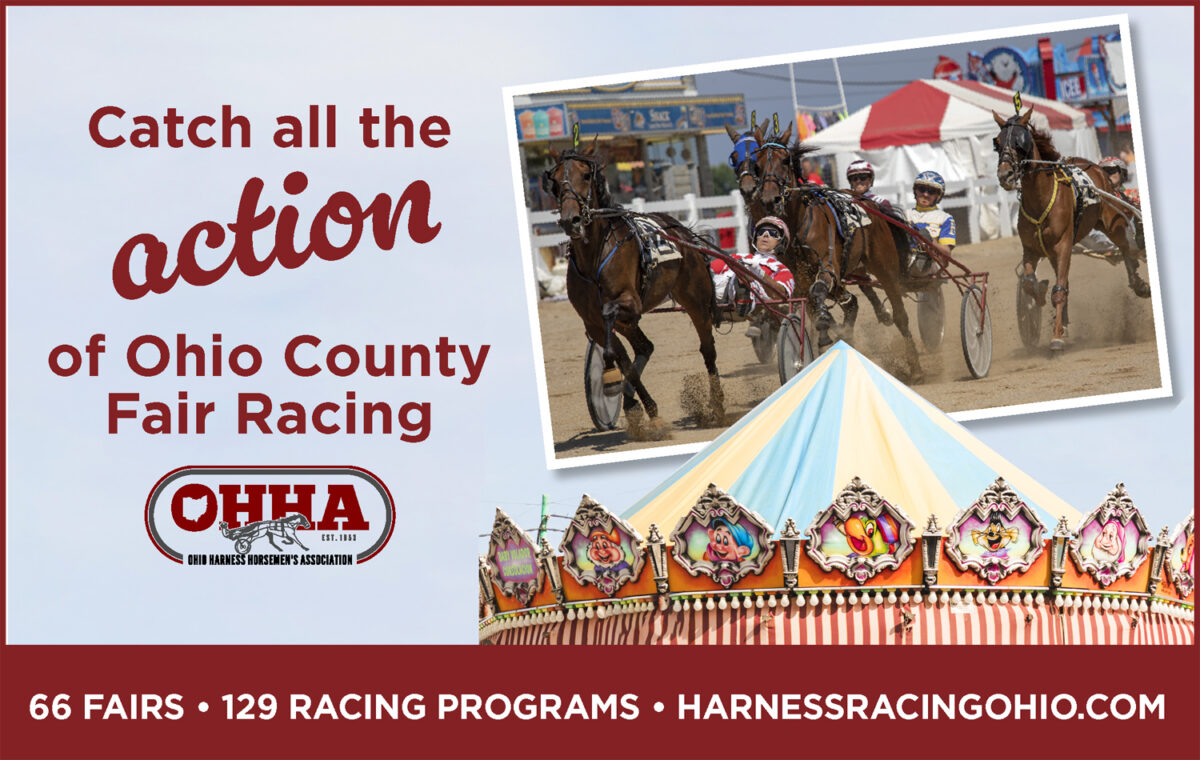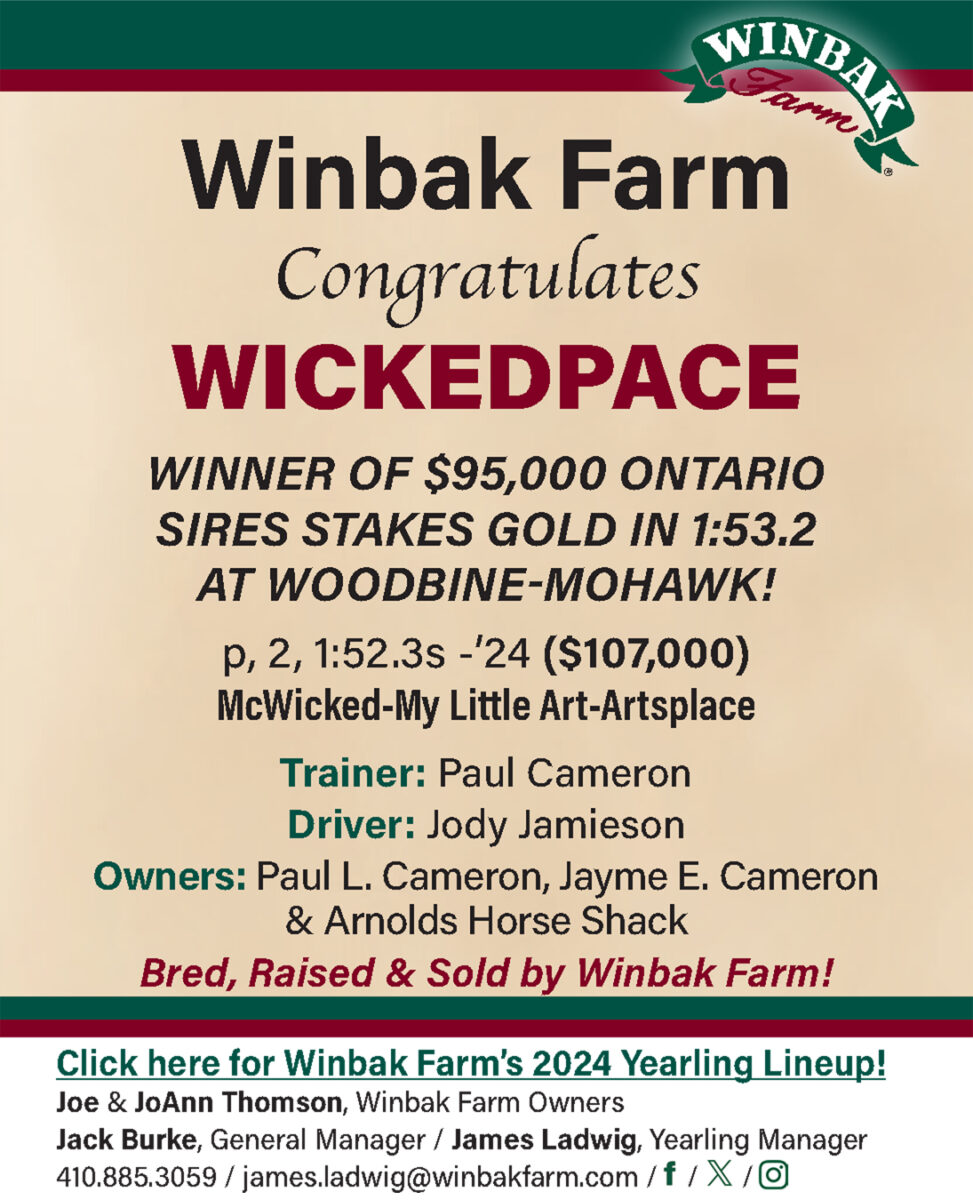

The show must go on
Mohawk tack shop owner Karen Breen shares hopes for Tioga Downs’ racing community while remembering Mohawk Racetrack’s 1992 backstretch fire.
by Melissa Keith
Thursday (Nov. 9) morning at Tioga Downs, firefighters extinguished the last of a deliberately-set blaze. Although the 2023 meet concluded on Sept. 23, the barns at Tioga were still home to numerous racehorses, including the 30 who died in Barn F. Tioga Downs’ barn area opened on April 1 for the stabling of horses racing during the 2023 meet.
Racetrack fires are depressingly familiar news. April 2, 1992 at Mohawk Racetrack (now Woodbine Mohawk Park), 69 standardbreds lost their lives in a backstretch fire the Toronto Star called “the worst-ever Canadian racetrack disaster.” At that time, roughly ٨٠٠ horses were stabled in the eight barns on the grounds of the Campbellville, ON track. A dormitory for Mohawk caretakers had just opened in November 1991, undoubtedly sparing the lives of grooms who may otherwise have been sleeping in the tack rooms.
Mohawk Barn 3 was completely consumed by the overnight fire. Sixty-five of the 72 full- and part-time Milton Fire Department firefighters responded to the scene to battle the blaze, but fire chief Richard Playfair told the Halton Hills Weekend newspaper, “Damage was negligible after the fire department arrived. The fire just kept getting smaller and smaller.”
The horses who died were killed by smoke inhalation, rather than the fire itself. Ontario Jockey Club vice-president Rick Cowan told reporter Jane Muller that the destroyed barn was a loss of around $600,000, but the overall toll was much greater: “This is just crippling in terms of morale. A couple of trainers lost their whole operation.”
Karen Breen operates Tackmaster Equipment, once a part of the Mohawk backstretch, now located just south of the track, in a retail plaza.
“It’s been the same [name] for 60 years now,” Breen said. “I owned it at the time [of the fire]. We had trailers that were set up in an area [on the backstretch], the tack shops and the repair shop and stuff like that. Back then, [Tackmaster] was right behind the kitchen at the racetrack, and I could see Barn 3 from my store. Close enough.”
She said she would never forget the morning after the Mohawk backstretch fire.
“In the morning, one of the horsemen called me and asked me if I heard about it,” Breen said. “I go, ‘Heard about what?’ And then he told me. I had a lot of customers in there that lost their horses. I was sick. Anyway, I got right over there… Yeah, it was bad.
“Normally, I would get there 9-ish, but I was probably there around 8 [a.m.] that day. I mean, there was nothing we could do at that point. You know: It was overnight and the fire was out and… the horses were killed. I’ve been around the backstretch since 1974 and it never even crossed my mind that it could happen. I was just devastated.”
Breen recalled the names of some horsemen who were hit particularly hard.
“Leonard Lalonde, he lost everything,” Breen said. “Rene Laarman lost everything. Norm McKnight is now in the thoroughbred business… That’s the [three] that I can remember, off the top of my head. Everybody was just crying. Like, how do you even address somebody? We just hugged and cried. It was horrible.”
When people worked together on the backstretch, as they did at Mohawk and continue at fewer tracks every year, close bonds formed between everyone involved in getting the horses ready to race. Mohawk Racetrack’s backstretch stabling closed permanently on Dec. 15, 2012, due to lessening demand. Roughly half of the 600 available stalls were filled at the time the announcement was made in Sept. 2012.
Breen said the off-track cooperation among on-track rivals helped horsepeople pull through the darkest hours after the 1992 blaze, which remains “the worst one” she’s seen in her career.
“It had been that way right from when I got into the business: We were all friends,” she said. “I was also on a [fundraising] committee when they had the fire at Classy Lane [Training Centre, in Puslinch, ON], barn 1… The barns weren’t as big, but what do you say to people?”
The harness racing tack vendor said she was incredulous when she learned of the Tioga Downs arson this week.
“When I heard that, I just couldn’t even imagine,” Breen told HRU, angrily voicing what she would say to the criminal behind the tragedy: “You know those horses are trapped, you idiot! Whether you have a grudge against someone, or you’re just a sadist and you want to hear horses dying… It’s bad enough when it’s electrical, which it was at Mohawk and Classy Lane, but when you find out someone set it, that’s devastating. For me, just unbelievable.”
After the 1992 Mohawk fire, she helped administer the funds raised to help those who had lost their horses.
“I can’t even remember all of the people [on the committee], but it was me, Lloyd Smith, Doug Elliott represented the Ontario Jockey Club back then; I think maybe Bill Hicks,” said the Campbellville, ON business owner. “See, we already had a charity fund set up that we all worked at, and we had gift tournaments and stuff to raise money for different charities. So, it was basically just a whole bunch of us got together and we had a meeting over in the grandstand. It just took off, like we were getting phone calls from training centers in Florida and racetracks all over the place, you know, ‘We’re going to send a bunch of equipment up.’ Everyone’s always got extra equipment, and it all got there.
“We had boxes of equipment and the guys were allowed to go through it and get what they wanted… I don’t think people realize how tough a job that was for us, because how do you distribute it?”
The standardbred industry united to assist the bereaved Mohawk horsepeople.
“In, I think it was two weeks, we raised $230,000, and that’s no Internet, no Visa, no nothing,” Breen said. “It was incredible how much money we had raised. We took off [i.e., did not reimburse for] the horses that were insured… and the rest of the horses, the $230 [thousand] was divided in. So, if you lost 10 horses, you got more money than a guy who lost two horses, which is right. We didn’t hand them a check. What we did is, we said, ‘Get set back up, give us the bills, and we’ll pay it on your behalf.’… Every one of them got back in business.”
She said she also offered harness “at cost, plus 10 per cent for brokerage and shipping” as a personal contribution for those rebuilding their stables. As for the ill-fated barn, it was never replaced.
“Barn 3 never got rebuilt and it was just a parking lot for trailers,” she said.
There was little time for grieving. Local media reported that racing went ahead on Friday night, April 3, 1992 at Mohawk.
“You know what, I don’t remember that,” Breen said. “But I would say… that’s everybody’s attitude in our business; The show must go on, and we’re not going to sit around here. I don’t remember any pause in the racing or anything.”
She does remember a new focus on electrical upgrades, “and they were way more fire-conscious.
“I think [racetrack management] must have gone through the barns, the whole nine yards. It wouldn’t have helped anyways. They never really determined the reason for [the fire], but they figured that somebody had hung a horse blanket or whatever and it was down over the heater… They were all baseboard heaters, electric heaters. They never really did make an announcement on what the cause was, but that’s what I always heard.”
Breen said she was heartened by the outpouring of support after the Tioga Downs fire.
“That’s just so hard,” she said with sadness in her voice. “But they’ve already raised almost $100,000 and that will get way bigger. People are sending equipment; I see people on Facebook: ‘Anyone shipping a horse north? We need some stuff taken to Tioga.’
“It’ll be a long time getting back to where you were, but it’ll happen, because the racing community’s that way. Like we raised for the Classy Lane fire, which was eight years ago, I’m thinking $600, to $700,000. The difference there was, you’ve got e-transfer, you’ve got this, you’ve got that [new payment methods]. It’s a piece of cake. You can go online and put your credit card in. We didn’t have that [at Mohawk in 1992]. Raising $230 [thousand] that quick was a big, big thing, in such a short time.”















